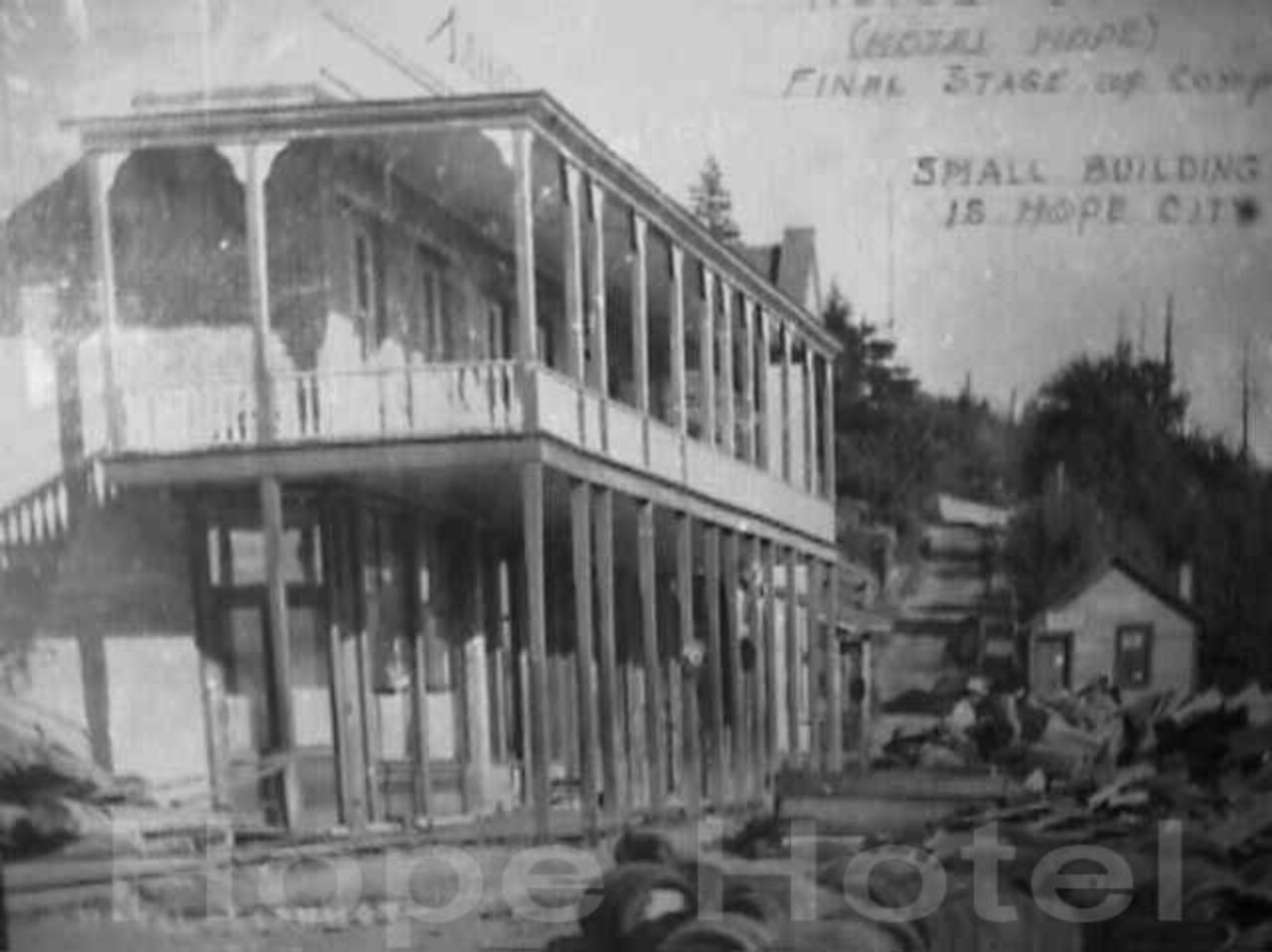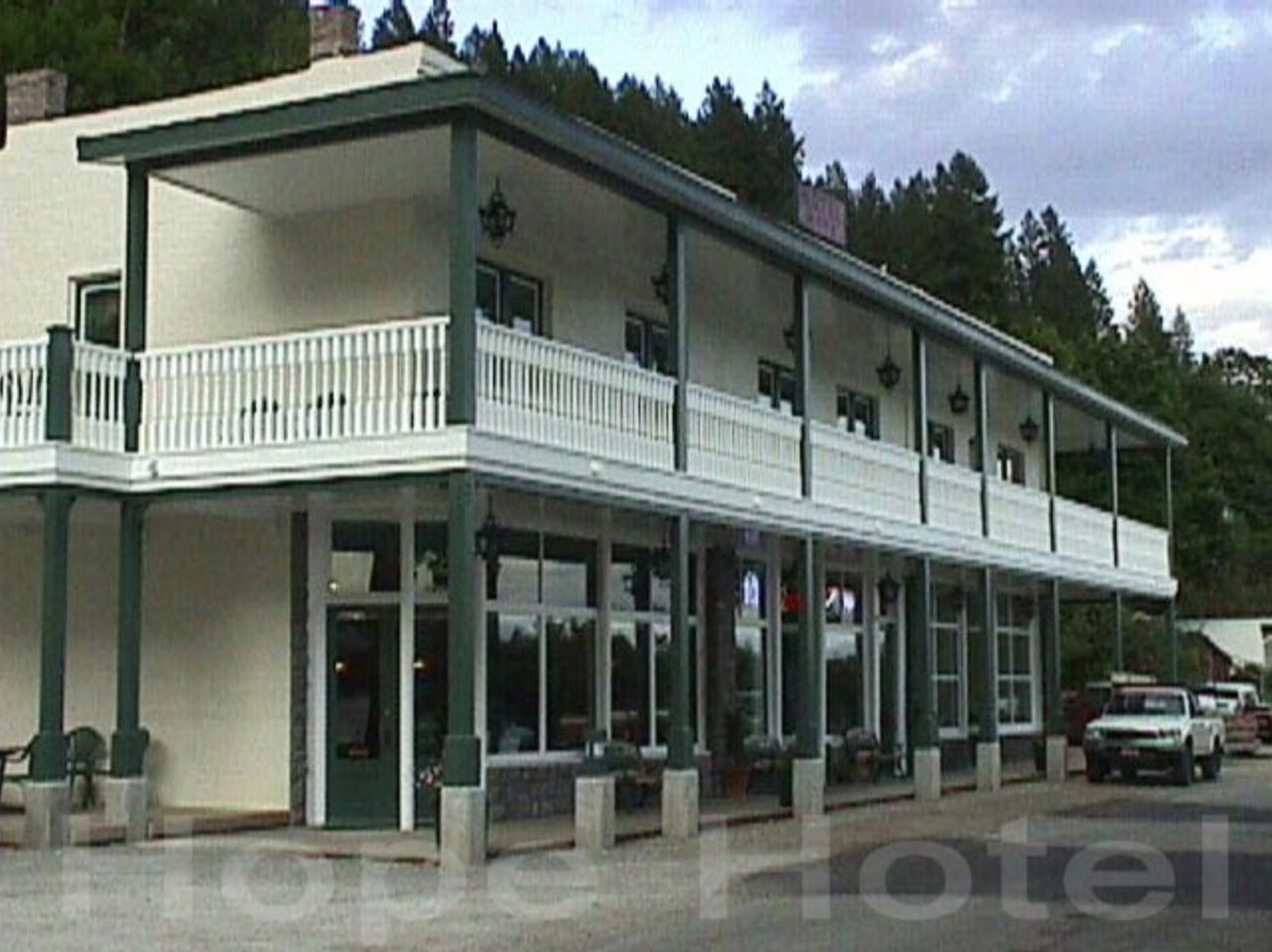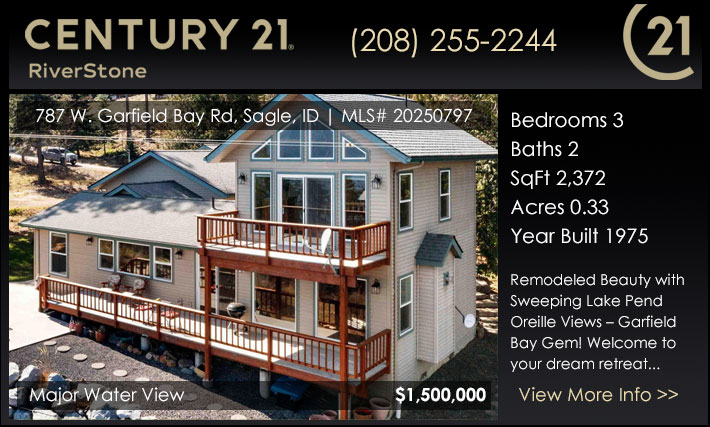

Hope, Idaho History is very interesting with Native Fur Traders and Historical Buildings. These are a few old stories and historical photos!
The Hope Hotel - Hope Idaho
Story by Bob Gunter - Year 2001
All photographs have been used with permission of the Bonner County Museum.
Hotel Hope was in its prime when Hope, Idaho, grew into prominence after becoming a center of commerce and a division point on the Northern Pacific Railroad.
The old lady sits with her back leaning against the hill behind her. She has seen life at it's best and at it's worst. She has been sitting like this since the town was a bustling center of activity with a population of 3,000 souls. She has seen the rich and famous and has known the poor and down trodden.
She still manifests the same character and sense of history but there is something different about her. She has had a perfect face-lift. One that has rejuvenated her but has retained all her old beauty and charm. One of her old friends, Teddy Roosevelt, would tell you that she hasn't changed a bit - just spruced herself up. The old lady, Hotel Hope, was built by Joseph M. Jeannot in 1897 and overlooks Lake Pend Oreille in Hope, Idaho.

The beautiful setting of Hotel Hope has drawn many tourists over the years. The most prominent were J. P. Morgan, Teddy Roosevelt, Bing Crosby and Gary Cooper.

You have only to walk through Hotel Hope to see how painstaking the people responsible for the reconstruction have been in seeing that none of the artifacts have been damaged. The walls are 15 inches thick and the same doorknobs are used today. In the basement one finds the site of the old tunnels that were used by guests to go down to the railway station.
The present building was a replacement for the wooden hotel built by Louis Jeannot, brother to Joseph. The frame building burned to the ground in 1886.
Hotel Hope was in its prime when Hope grew into prominence after becoming a center of commerce and a division point on the Northern Pacific Railroad. Several trains a day stopped at Hope on the way from Minnesota to Portland, Oregon.There have been four owners over the years. Joseph Jeannot defaulted on the mortgage in 1920 and Marie Root paid off the loan and purchased the hotel.
A couple from California were driving through Hope in 1971 and saw a "For Sale" sign in the old building's window. Guy Neyman purchased it and started some reconstruction.
Wendel and Beverly Bergman then purchased the hotel and, with the help of Bob LaFore, brought it to what you see today. In fact, it took the old lady 100 years to complete her face lift.
The beautiful setting of Hotel Hope has drawn many tourists over the years. The most prominent were J. P. Morgan, Teddy Roosevelt, Bing Crosby and Gary Cooper.
You have only to walk through Hotel Hope to see how painstaking the people responsible for the reconstruction have been in seeing that none of the artifacts have been damaged. The walls are 15 inches thick and the same doorknobs are used today. In the basement one finds the site of the old tunnels that were used by guests to go down to the railway station. On the first level the saloon looks much as it did in the early 1900s. On the second floor is room number ten. This and two connecting rooms were the suite of rooms used by Teddy Roosevelt when he visited the area.
Early Hope, Idaho
by Bob Gunter - 2001
The first white man to come to the area was the famed David Thompson, map maker and fur dealer. He had traveled from Canada and built Kulyspell House on the peninsula of Lake Pend Oreille.
The history of Hope began in 1882 with the coming of the railroad. The town was built on a hill overlooking beautiful Lake Pend Oreille. Any person living in the area today will readily tell you that it is the most beautiful spot on earth.
In the early days the Northern Pacific Railroad built Highland House in Hope as a luxury hotel for the use of Easterners. The hotel had three stories and was well publicized as a place of recreation and relaxation. The most famous visitor to stay at the hotel was General William Sherman of Civil War fame.
Before the Northern Pacific moved its division point from Heron, Montana, Hope had only a few families and some Indians living in the area. The move resulted in over-night growth and Hope became a center of activity. The town got its name from a Dr. Hope who was a veterinarian with the railroad. The town was plotted in 1896 and in 1903 a petition for corporation was signed.
In the early days of Hope gambling and drinking was the order of the day. At one time there were seven saloons in a one-block area. One of the popular saloons was located in the old Jeannot Hotel. This hotel has been renovated and still stands but is no longer in business. One of the stores in early Hope was called Twin Woo Company. The owner, Twin Woo, also managed the Chinese who worked on the railroad. At one time there were 300 Chinese workers employed in the Hope area.
Early Hope sported a Post Office, two Hotels, two restaurants, a lumber company, two barber shops, a lath and shingle mill, two meat markets, blacksmith shop, and a drug store. Wagon, horseback, train or boat provided transportation.
The Kullyspell House
by Bob Gunter - 2001
David Thompson, one of North America's most famous explorers, came to the shores of Lake Pend Oreille and built what he called "Kullyspel House."
David Thompson, one of North America's most famous explorers, came to the shores of Lake Pend Oreille and built what he called "Kullyspel House." It was the first structure, built by a white man, in the State of Idaho. The purpose for building the house was to have a place for trading with the local Indians; therefore, the house became the first business venture in Idaho.
Thompson documented the building of Kullyspel House and through his words one can get an idea how the two structures looked that were located on the Hope Peninsula. Thompson wrote, "The next day (September 10, 1809) with two Indians I went to look for a place to build a House for trading; we found a place, but the soil was light, and had no blue clay which is so very necessary for plaistering between the Logs of the House and especially the roofing; as at this time of year, the bark of the Pine Tree cannot be raised to cover the Roof, for want of which, we had an uncomfortable House. We removed to the place and set up our Tents and a Lodge. On the 11th we made a scaffold to secure the provisions and goods, helved our Tools Ready to commence building; our first care was a strong Log building for the Goods and Furrs, and fir trading with the Natives…. On the 23rd we had finished the Store House. To make the roof as tight as possible, which was covered with small Logs, we cut long grass and worked it up with mud, and filled up the intervals of the small logs which answered tolerable well for Rain, but the Snow in melting found many a passage; in this manner we also builded our dwelling House; and roofed it, the floors were of split Logs, with the round side downwords, notched so as to lie firm on the Sleepers, and made smooth with the Adze; our Chimneys were made of stone and mud rudely worked for about six feet in height and eighteen inches thick, the rest of layers of grass and mud worked around strong poles inserted in the stone work, with cross pieces, and thus carried up to about four feet above the roof; the fire place is raised a little, and three to four feet in width by about fifteen inches in depth. The wood is cut about three feet in length, and placed on the end, and as it costs nothing but the labor of cutting we are not sparing of it:"
David Thompson did not spend too many days at the new trading post before moving on to other adventures. He left Finan McDonald in charge and in about two years Kullyspell House ceased to be used as a fur-trading establishment. The location of the old house was not known until 1923 when a Kalispel Indian, who was almost blind, led the way to the ruins of Thompson's house on the lake.
Search Hope Idaho Real Estate | Meet a REALTOR | Request a Hope Property
305 N First Ave, Sandpoint, ID 83864 | (208)255-2244 | toll free (800) 205-8771


Hope, Idaho is Rich in fantastic Historical Events and Famous people who shaped the area. These stories and historical data was provided by Bob Gunter back in 2001 in an effort to educate people as to the history of our area!
